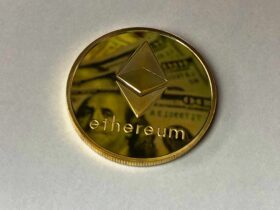Quantum entanglement is a phenomenon whereby two or more quantum systems become connected so that the state of one system can affect the state of the other(s), even when separated by large distances. Classical physics does not explain this connection, or “correlation,” between the systems.
It has been a subject of intense study and debate since it was first proposed by Albert Einstein, Boris Podolsky, and Nathan Rosen in 1935. Quantum entanglement is one of the fundamental properties behind quantum computing, and its potential impact on finance, business, and society is excellent.
We will discuss the history of this scientific field, ongoing research, how entanglement relates to the exciting field of quantum computing, and how these technologies may solve some essential and potentially fundamental questions as we advance.
What Is Quantum Entanglement?
The concept of quantum entanglement was born in the 20th century during the atomic age. One of the first and most famous examples of quantum entanglement is the Einstein-Podolsky-Rosen (EPR) paradox.
In this thought experiment, two particles are created at the same point in space and separated considerably. The spin state of one particle is measured, and it is found to be ‘up’. According to classical physics, the other particle’s spin state should also be ‘up’ or ‘down’ with a 50-50 chance.
However, in quantum mechanics, the state of the second particle is instantaneously affected by the measurement of the first particle, meaning that its spin state is also ‘up’. This concept is known as ‘spooky action at a distance’ and was considered by Albert Einstein to be a flaw in quantum mechanics.
This graphic, courtesy of NASA/JPL-Caltech, is intended to explain ‘entangled particles’. Alice and Bob represent photon detectors developed by the Jet Propulsion Laboratory (under NASA) and the National Institute of Standards and Technology.
Back in 1964
The phenomenon of quantum entanglement was first experimentally demonstrated by physicist John Bell in 1964. Bell proposed an inequality, now known as Bell’s inequality, which stated that certain measurements of entangled particles would always produce specific results if classical physics were correct.
However, experiments have repeatedly shown that the results of these measurements violate Bell’s inequality, proving the existence of quantum entanglement.
One of the most critical implications of quantum entanglement is the concept of quantum teleportation. Quantum teleportation is the process of transferring the state of a quantum system from one location to another without physically moving the system. For example, in 1993, physicist Charles Bennett and his team successfully teleported a photon’s state over a few metres.
Since then, scientists have been able to teleport the state of atoms, ions, and even larger objects over increasingly larger distances, both in and outside the laboratory. Quantum entanglement has also been used to create highly secure forms of encryption.
For example, in a quantum key distribution (QKD) process, two parties can communicate securely by sharing a secret key encoded in entangled particles. Furthermore, because any attempt to measure the state of these particles will alter it, any third party attempting to intercept the communication can be detected. We’ll discuss the implications of QKD a bit more in a subsequent section.
Read the full article here.






